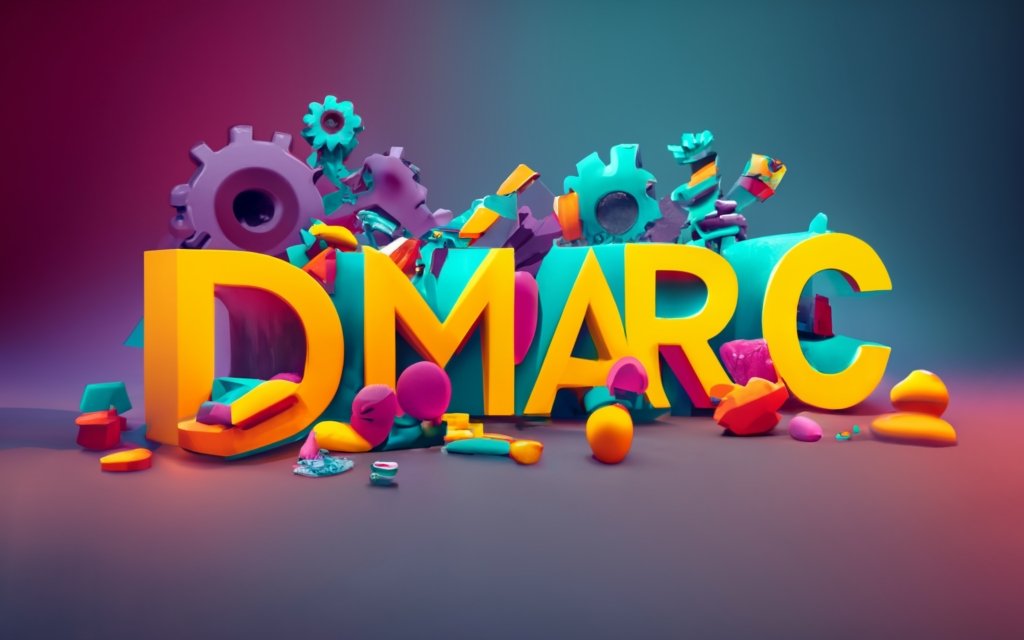Is your inbox full of phishing scams impersonating your own domain? Are customers complaining about spoofed spam claiming to be from you? Take control of email authentication with DMARC – the ultimate defense against impersonation attacks.
Implementing DMARC can seem overwhelming…until you break it down step-by-step. This comprehensive guide demystifies DMARC records, policies, reporting, troubleshooting, and everything in between. Learn how to adopt DMARC the right way. Stop fraud in its tracks and protect your brand reputation with robust email authentication. Let’s conquer DMARC together!
What is DMARC and How Does it Work?
DMARC (Domain-based Message Authentication, Reporting, and Conformance) is an email authentication protocol designed to detect and prevent email spoofing, phishing, and other cybersecurity threats. It builds on SPF and DKIM protocols to add an extra layer of protection for inbound and outbound email.
Overview of DMARC
DMARC works by enabling email receivers to check that incoming mail comes from authorized sources. It also provides visibility into how your domain is being used to send emails.
Here’s a quick overview of how DMARC functions:
- Your domain publishes a DMARC DNS TXT record with your policies.
- Emails are checked against SPF and DKIM alignment.
- Receivers generate reports detailing authentication failures.
- You can refine your policies based on DMARC reports.
With DMARC in place, receivers can identify and block spoofed messages pretending to come from your domain.
How DMARC Authenticates Emails Using SPF and DKIM
DMARC relies on two existing email authentication protocols:
- SPF (Sender Policy Framework) validates the source IP address of emails.
- DKIM (DomainKeys Identified Mail) checks that email contents haven’t been tampered with.
When you create a DMARC record, you tell receivers that your emails are protected by both SPF and DKIM.
Here is how the DMARC authentication process works:
- An email is sent from your domain.
- The receiver checks the SPF record to validate the sending IP address.
- DKIM is used to authenticate the message contents through public key encryption.
- Once the SPF and DKIM checks pass, DMARC then analyzes the alignment of these protocols.
Both SPF and DKIM must align with your DMARC record for the email to fully authenticate.
DMARC Alignment – How Emails are Checked Against SPF and DKIM
Alignment refers to how the SPF and DKIM results match up with your domain and policies in the DMARC record.
There are a few key alignment checks that receivers perform:
- Domain alignment – The SPF and DKIM domains must match your base DMARC domain. Emails from subdomains pass as long as your DMARC record doesn’t explicitly exclude them.
- Organizational domain alignment – For DKIM, the domain of the signing key must be within your organizational domain. For SPF, the domain in the MAIL FROM address must align.
- Policy alignment – Any DMARC policies like subdomain policies or percentage tags must be adhered to.
If both SPF and DKIM are aligned, the email passes the DMARC check. If either fails alignment, the email fails DMARC authentication.
DMARC Reporting – RUA and RUF Explained
A key benefit of DMARC is gaining visibility through aggregate and forensic reports:
- Aggregate reports (RUA) provide high-level authentication statistics for your domain.
- Forensic reports (RUF) include granular details on individual failed emails.
DMARC Aggregate Reports (RUA)
Aggregate reports contain:
- Totals of emails checked, authenticated, and failed
- Domains, IP addresses, and technologies used
- Policy decisions like percentage of emails quarantined
They help you identify legitimate vs unauthorized sources of email and refine policies.
DMARC Forensic Reports (RUF)
Forensic reports provide:
- Metadata like subject lines and timestamps
- Reasons for SPF or DKIM failures
- Snippet samples of failed emails
RUF reports offer visibility into specific spoofing attacks on your domain. However, privacy laws often deter companies from requesting them.
Proper analysis of both RUA and RUF reports is crucial for maximizing the value of your DMARC implementation.
DMARC offers a robust email authentication framework to stop spoofing and phishing attacks. By using SPF, DKIM, and alignment checks, DMARC gives receivers instructions to handle both legitimate and fraudulent emails from your domain. Implementing DMARC provides critical protection and visibility for any organization that relies on email.

Key Components of a DMARC Record
A DMARC record is a TXT entry published in your public DNS that specifies your email authentication policies. The tags and values contained in your DMARC record tell receivers how to validate and handle emails from your domain.
There are several key components that make up a functional DMARC record:
DMARC Version Tag
The DMARC version specifies which version of the protocol is being used. Currently, the only version is DMARC1:
v=DMARC1
All DMARC records should start with the DMARC1 version tag.
DMARC Policy Tag – None, Quarantine, Reject
The DMARC policy tag (p) is the core directive that tells receivers what to do with emails that fail authentication checks:
p=none– Monitor and report only, no action taken on failures.p=quarantine– Move failed emails to the spam folder.p=reject– Reject emails that fail alignment entirely.
When starting with DMARC, it’s best to begin in monitor mode with p=none. As you gain visibility into legitimate email sources, you can increase to quarantine or reject policies.
Here is an example policy tag set to reject:
p=reject
The policy tag is mandatory for a functional DMARC record.
DMARC Percentage Tag
The percentage tag (pct) allows you to gradually roll out stronger policies:
pct=50
This would apply your policy to 50% of failure traffic. The rest would continue to your recipients’ inboxes.
Starting at a lower percentage prevents disruption to legitimate emails as you implement DMARC. You can incrementally increase pct as you confirm authorized sources.
DMARC Reporting URIs – RUA and RUF
To collect DMARC reports, you need to specify URIs for aggregate and forensic reports:
rua=mailto:[email protected]
ruf=mailto:[email protected] The rua= tag designates where to send your DMARC aggregate reports. These provide high-level insights into your email traffic and threats.
The ruf= tag specifies the recipient for granular DMARC forensic reports on individual email failures.
DMARC Subdomain Policy Tag
By default, your DMARC record applies to your root domain and all subdomains. The subdomain policy tag sp= lets you exclude specific subdomains:
sp=mail.example.com
This would allow emails from mail.example.com to pass DMARC, while applying your policy to all other subdomains.
Use subdomain policies to avoid rejections from legitimate third-party email services on your domain.
DMARC Failure Reporting Options – FO Tag
The fo= failure reporting tag gives instructions on when you want to receive forensic reports:
fo=0– Only get RUF reports on SPF/DKIM failuresfo=1– Get RUF reports on any DMARC failurefo=d– Failure reports for DKIM failuresfo=s– Failure reports for SPF failures
Setting fo=0 reduces the volume of RUF reports to those most relevant for remediation.
Example DMARC Record
Putting it all together, here is an example DMARC record:
v=DMARC1;
p=none;
pct=10;
rua=mailto:[email protected];
fo=0;
sp=mail.example.comThis implements a monitor policy at 10%, requests aggregate reports, specifies SPF/DKIM-only RUF reports, and excludes the mail.example.com subdomain from alignment checks.
The tags and syntax of your DMARC record establish the specific email authentication policies enforced by mail receivers. Precision in configuring your DMARC tags is important to ensure legitimate mail flows while rejecting fraudulent emails. Work closely with your email infrastructure teams when constructing your DMARC record.

Implementing DMARC – A Step-by-Step Guide
Rolling out DMARC for your organization involves carefully progressing through phases of preparation, monitoring, and policy enforcement.
Follow these steps to successfully implement DMARC without disruption:
Gather Information on Your Email Sources
Before creating your DMARC record, you need full visibility into your email infrastructure and sources.
Identify:
- All legitimate sending IP addresses and domains
- Any third-party email services
- Groups that send high volumes of email
This allows you to map out potential alignment issues and exemptions needed.
Create DMARC DNS Records
The next step is publishing your DMARC record in DNS. Your record should include:
v=DMARC1- A
p=nonemonitor policy pct=100to apply the policy fully- RUA and RUF reporting URIs
Use a DNS TXT lookup tool to validate your DMARC record is visible. This activates DMARC for your domain.
Start with a Monitoring Policy
It’s crucial to begin with a p=none policy to monitor authentication without impact.
In monitor mode, DMARC reports will show sources of:
- Legitimate email that passes DKIM+SPF checks
- Email that fails due to improper configurations
- Fraudulent spoofing of your domain
Address any infrastructure issues before moving to enforcement policies.
DMARC Reports and Refine Policies
Regularly review your DMARC aggregate reports during initial monitoring. Check alignments and failure rates for problem areas.
Use DMARC forensic reports to identify specific emails impacted by authentication issues.
Gradually refine your policies in DNS:
- Exclude subdomains of legitimate email services
- Add IP addresses to SPF records
- Improve DKIM publishing
- Increase percentage towards enforcement
Move to Quarantine and Eventually Reject Policies
Once you have a solid understanding of your email ecosystem, you can ramp up your policy:
- First move to
p=quarantineto send failures to spam folders. Monitor deliverability. - Finally switch to
p=rejectonce you’ve confirmed all legitimate sources will align.
Consider maintaining a percentage less than 100% to allow some non-aligned mail through.
Monitor and Maintain Your DMARC Implementation
DMARC is not a set-it-and-forget-it solution. You need ongoing visibility through aggregate and forensic reports to address:
- New email sources and services
- Changes in email infrastructure
- Evolving attack patterns on your domain
Plan to revisit your DMARC record regularly and adjust based on new data. Don’t let your DMARC implementation go stale.
With careful planning and progressing through a phased deployment, you can implement DMARC successfully without negatively impacting deliverability. Regularly monitoring DMARC reports is crucial for maintaining email authentication. DMARC is a continuous journey that requires ongoing vigilance.

DMARC Best Practices for Your Industry
DMARC implementation varies across sectors due to unique email use cases and security risks. Follow these industry-specific best practices when adopting DMARC for your organization.
DMARC for Financial Services
Financial services firms hold highly sensitive customer data. Phishing attacks can lead to fraudulent transactions and breach notifications.
Banks, insurers, and lenders should:
- Audit for any shadow IT email systems outside of corporate IT. Bring them under centralized DMARC.
- Coordinate with marketing to phase out reliance on third-party mass email services.
- Reject external mail early but monitor reports to avoid disrupting customer service communications.
- Leverage DMARC reports to detect credential phishing attacks targeting customers.
DMARC in Healthcare
DMARC helps healthcare organizations comply with HIPAA and protect patient information.
Best practices for healthcare providers:
- Segment DMARC policies by domain. Use reject for employee email, but moderate settings for telehealth and patient portals.
- Authenticate IoT devices that send automated emails, like patient reminders and notifications.
- Work with EHR vendors to implement aligned DKIM signatures on all outgoing mail.
- Detect impersonation attempts through analysis of DMARC reports.
DMARC for eCommerce and Retail
Retailers have large volumes of transactional mail and marketing messages.
To balance deliverability and security:
- Gradually increase enforcement policies during peak traffic like holidays.
- Add affiliate/sender IDs to marketing email tracking links to distinguish DMARC failures by campaign source.
- Implement DMARC at the parent domain level to cover all subdomains.
- Pay close attention to DMARC reports for new marketing mail streams.
DMARC Implementation in Government
Public sector agencies communicate frequently with citizens via email.
Government DMARC best practices:
- Create a DMARC working committee across departments and technical teams.
- Develop a DMARC implementation plan accounting for legacy systems.
- Set moderate quarantine policies defaulting to reject for citizen-facing services.
- Comply with open data laws by publishing aggregate reports with privacy redactions.
DMARC for Higher Education
Universities leverage email heavily but have decentralized environments.
For education DMARC deployment:
- Identify all departments, student groups, and alumni associations authorized for email.
- Create a DMARC exception process for new ad-hoc email communications needs.
- Temporarily use subdomain policies to allow listing services that students use.
- Assign DMARC report review duties to your information security office.
Industry Takeaways
While DMARC fundamentals are universal, applying them within complex enterprise environments requires sector-specific planning. Regularly review reports and policies across business units as threats evolve.
Work cross-functionally to determine appropriate DMARC policies balancing security, deliverability, and industry regulations. Allocate proper resources to manage DMARC long-term and adapt controls to your organization’s unique email ecosystem.

Troubleshooting Common DMARC Issues and Challenges
DMARC can present implementation and maintenance challenges. Use these troubleshooting tips to navigate common DMARC problems.
No DMARC Reports Being Received
If you aren’t getting DMARC reports after creating a record, verify:
- The reporting URIs use a valid “mailto:” email address that you can access. Check the mailbox!
- DNS propagation has completed and the record is publicly visible.
- There are no typos or syntax errors in your DMARC record preventing aggregation.
- The record is at your root domain level, not a subdomain. Reports typically only generate for the base domain.
Also, not all receiving domains will adhere to your report requests. Larger email services are more likely to comply. Don’t expect 100% coverage.
High DMARC Failure Rates
Failure rates exceeding 15% typically indicate configuration issues:
- Audit SPF records and DKIM selectors to ensure proper authentication publishing.
- Review forensic reports for insight into the failure causes and emails impacted. Look for gaps in IP addresses, hidden subdomains sending, etc.
- Counterintuitively, you may need to temporarily relax your DMARC policy while remediating infrastructure issues.
- Consider policy exemptions for legitimate marketing email streams with high failure rates.
Persistently high failures after SPF/DKIM fixes likely means your domain is under targeted phishing attacks.
Legitimate Email Being Quarantined or Rejected
If DMARC is blocking wanted mail:
- Add exception policies for subdomains of impacted services like CRM, mass email tools, etc.
- For third-party senders, require DKIM signing aligned to your domain’s Organizational Domain.
- Check forensic reports for false positives and whitelist legitimate senders.
- Review rejections correlates like spikes on certain days or around campaigns.
- Temporarily roll back enforcement policies while troubleshooting.
Carefully analyze traffic patterns before adjusting DMARC settings.
Managing DMARC with Third-Party Email Services
When using external email providers:
- Ask them to DKIM sign with your Organizational Domain for alignment.
- Segment their traffic by adding a custom identifier domain to the sender address.
- Start with subdomain exception policies until they can authenticate fully.
- Request access to their raw logs for deeper debugging of failures.
Maintain close relationships with commercial email partners for DMARC success.
Adopting DMARC for a Large Enterprise
For large companies:
- Conduct an extensive audit of IT systems, business units, and acquisitions sending mail.
- Build a cross-functional team with email admins, security, marketing, and IT enterprise architecture.
- Develop a DMARC vision statement and multi-year strategic roadmap.
- Phase enforcement at the departmental domain level before tackling the root domain.
- Automate report collection and analysis instead of manual reviews.
DMARC for massive corporations requires substantial coordination and planning.
With attention and commitment to addressing implementation obstacles, your organization can eventually reap the full benefits of DMARC email authentication and protection.

Frequently Asked Questions about DMARC
Let’s review answers to some frequently asked questions about DMARC implementation and email authentication.
What are the benefits of DMARC?
DMARC provides multiple security and deliverability benefits:
- Mitigates phishing – DMARC blocks spoofed/fraudulent email pretending to originate from your domain.
- Stops domain abuse – DMARC prevents spammers from hijacking your brand’s reputation.
- Improves inbox placement – Aligning with DMARC helps legitimate mail avoid spam folder filtering.
- Provides visibility – Aggregate and forensic reports offer insights into email threats and risks.
- Centralizes control – DMARC gives you unified control over email authentication from your domain.
- Saves time – Your employees waste less time identifying and managing spoofed messages.
- Enhances compliance – DMARC strengthens compliance with regulations requiring email security controls.
Proper DMARC implementation results in substantial ROI in risk reduction and operational efficiency.
Is DMARC free?
The DMARC standard itself is an open specification published by the DMARC.org industry group. There are no direct costs to create and publish a DMARC DNS record.
However, managing ongoing DMARC reporting and policy administration does require software tools and personnel time to:
- Collect and parse aggregate and forensic reports.
- Analyze reports and failure trends.
- Continuously update policies in DNS as needed.
For this reason, many organizations use commercial DMARC reporting tools rather than trying to process reports in-house.
How long does DMARC implementation take?
For a basic DMARC rollout focused just on monitor mode and reporting:
- Planning and internal coordination can take 1-2 months.
- Starting to collect and review reports takes 2-3 months.
- Optimizing configurations and addressing issues takes another 3-6 months.
To fully enforce DMARC policies with confidence can take most organizations 6-12 months. Every situation is unique however based on email complexity.
What is a DMARC aggregate report?
DMARC aggregate reports provide summary statistics and metrics about email traffic analyzed for your domain during the reporting period (usually daily).
Aggregate reports contain:
- Total email volumes and numbers that passed/failed.
- Domains, IP addresses, and technologies used to send mail.
- Authentication mechanism results (SPF, DKIM, etc).
- Policy actions taken, such as percentage rejected or quarantined.
Aggregate reports help identify legitimate vs. fraudulent senders to optimize your DMARC configurations.
Should I request forensic reports?
DMARC forensic reports provide granular details about specific emails that failed DMARC authentication, such as:
- Subject lines and message snippets.
- Sending infrastructure and message metadata.
- Reasons for DKIM/SPF failures.
However, due to private data risks, many organizations avoid enabling forensic reporting. Analyzing aggregate reports is typically sufficient to refine DMARC policies.
What is the difference between reject and quarantine policies?
With a p=reject policy, messages failing DMARC are blocked outright and never delivered to the recipient’s inbox.
However, with p=quarantine, mail that fails DMARC goes to the recipient’s spam or junk folder instead of being completely rejected.
Reject is the most aggressive DMARC policy while quarantine still enables access to non-compliant messages marked as spam. Always start with quarantine policies first before fully rejecting mail.
DMARC and email authentication can seem complex at first. But taking time to learn best practices and work through challenges is worthwhile to secure your organization against phishing and fraud.
Other Relevant Questions
What is a DMARC aggregate report used for?
DMARC aggregate reports provide high-level statistics about email volumes, authentication results, and policy actions taken. Report analysis helps identify legitimate vs. fraudulent senders to guide DMARC policy configurations.
How long should I keep DMARC records?
It’s recommended to keep DMARC aggregate reports for at least 1 year. Reports older than a year can be archived or deleted as needed.
Can I use DMARC without DKIM and SPF?
DMARC relies on DKIM and SPF to authenticate email. At minimum, you need SPF or DKIM enabled along with a DMARC policy for it to provide value.
What happens if I never receive DMARC reports?
If you requested aggregate and/or forensic reports but never receive them, it likely indicates an issue with your DMARC record configuration preventing reporting.
Does DMARC encryption help security?
DMARC does not provide encryption. However, implementing both DMARC authentication and encrypted transport via TLS can significantly strengthen email security.
Can DMARC prevent BEC attacks?
DMARC can help detect and prevent business email compromise attacks by blocking spoofed lookalike domains criminals use to impersonate company executives.
What reporting providers offer DMARC analysis?
Popular DMARC reporting providers and analyzers include DMARC Analyzer, OnDMARC, Valimail, Agari, and 250ok. Many provide a reporting UI, analytics, and policy recommendation capabilities.
Should I enforce DMARC for transactional mail?
It’s recommended to gradually implement DMARC enforcement policies on transactional mail streams to avoid mass mail failures. Use subdomain policies and reporting to identify legit transactional sources first.
Does DMARC work on custom email clients?
Since DMARC operates at the receiving mail server level, it will authenticate mail from all sources as long as the client properly implements DKIM and SPF protocols.
Careful DMARC planning, deployment, and ongoing management is essential for maximizing email protection. Leverage reporting data to continuously adapt your configurations.

Summary on DMARC Implementation
Implementing DMARC provides tremendous protection against impersonation attacks on your domain. By following best practices, you can adopt DMARC smoothly and effectively.
- DMARC works by aligning SPF and DKIM email authentication with published policies in DNS. Failure traffic is either quarantined or rejected based on your directives.
- Construct your DMARC DNS record carefully using the proper syntax and tags for your version, policy, reporting, percentages, and subdomain coverage.
- Always start with a monitor-only approach to baseline your email ecosystem and address any infrastructure issues or gaps.
- Analyze aggregate and forensic reports diligently while incrementally increasing enforcement policies over several months.
- Account for unique requirements across business units, particularly marketing, when determining your DMARC policies.
- Troubleshoot issues methodically using reporting data if you encounter blocked legitimate mail, lack of visibility, or high failure rates.
- Keep DMARC and related infrastructure current through continuous monitoring and maintenance as your organization evolves.
Following a phased rollout and learning along the journey will pave the way for DMARC success and strengthened email protections.

